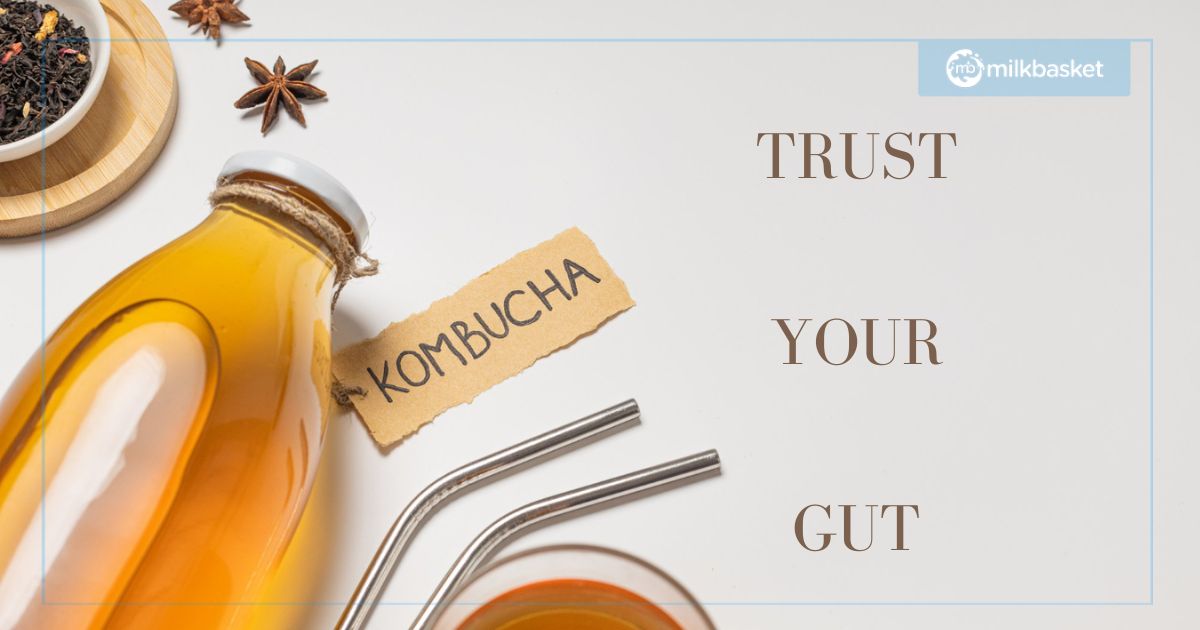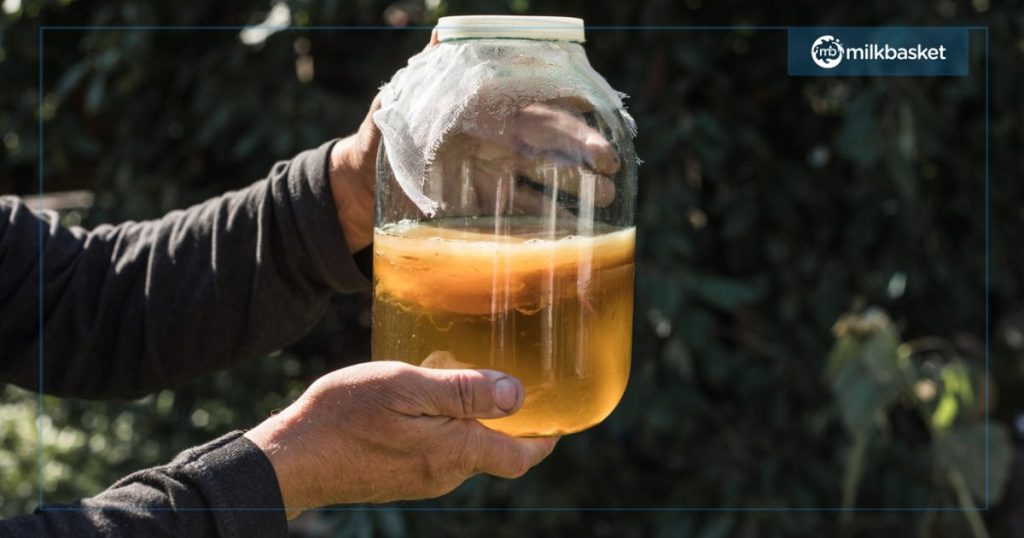

Kombucha is a type of fermented tea that has become increasingly popular in recent years due to its potential health benefits. It is made by adding a symbiotic culture of bacteria and yeast (referred to as a “SCOBY”) to sweetened black or green tea, and allowing the mixture to ferment for about a week.
During the fermentation process, the SCOBY consumes the sugar in the tea and produces various organic acids, enzymes, and probiotics, which give kombucha its characteristic tangy flavor and fizzy texture. Some of the potential health benefits of drinking kombucha include improved digestion, immune support, and detoxification, although these claims are not yet fully supported by scientific research.
Kombucha can be purchased bottled in many grocery stores, health food stores, and specialty shops, or it can be made at home with a SCOBY and a few simple ingredients. It is important to note that, like any fermented food or beverage, there is a risk of contamination or over-fermentation if not prepared and stored properly.


Kombucha is a fermented tea beverage that has been consumed for centuries in many parts of the world. While the exact origins of kombucha are unclear, it is believed to have originated in Northeast China or Manchuria, where it was consumed for its health benefits.
The first written record of kombucha dates back to 221 BCE in China, during the Tsin Dynasty. The beverage was known as the “Tea of Immortality” and was said to have been introduced to Japan by a physician named Kombu around 415 CE.
Kombucha spread throughout Asia and Europe, where it was valued for its medicinal properties. It became particularly popular in Russia during the early 20th century, where it was known as “tea kvass” and was a staple in many households.
In the 1960s and 1970s, kombucha gained popularity in the United States and other Western countries as a health beverage. Its popularity continued to grow in the following decades, and today, kombucha is widely available in health food stores and supermarkets around the world.
While kombucha has a long history of traditional use, scientific research into its health benefits is limited. Some studies suggest that kombucha may have antimicrobial, antioxidant, and anti-inflammatory properties, but more research is needed to fully understand its potential health benefits.
First Fermentation
Guidelines For The First Fermentation:
Guidelines For Second Fermentation:
In the second fermentation, you can add any flavours. Since summers are near, we have decided upon mango, a great fruit that everyone loves.
You can buy the tea, sugar and fruit from Milkbasket. The order will come to you packed, sealed and absolutely fresh.
Fasting doesn’t mean you have to miss out on enjoying delicious, nutritious treats like kheer…
Valentine’s Day is all about love, surprises, and meaningful gestures. Finding the perfect Valentine's Day…
The morning sets the tone for the rest of the day, and the first thing…
The vegan lifestyle has gained significant popularity in recent years, and for good reason. With…
Republic Day, celebrated every year on January 26th, is one of India's most significant national…
Travelling is always an exciting adventure, whether it’s a spontaneous weekend getaway or a well-planned…